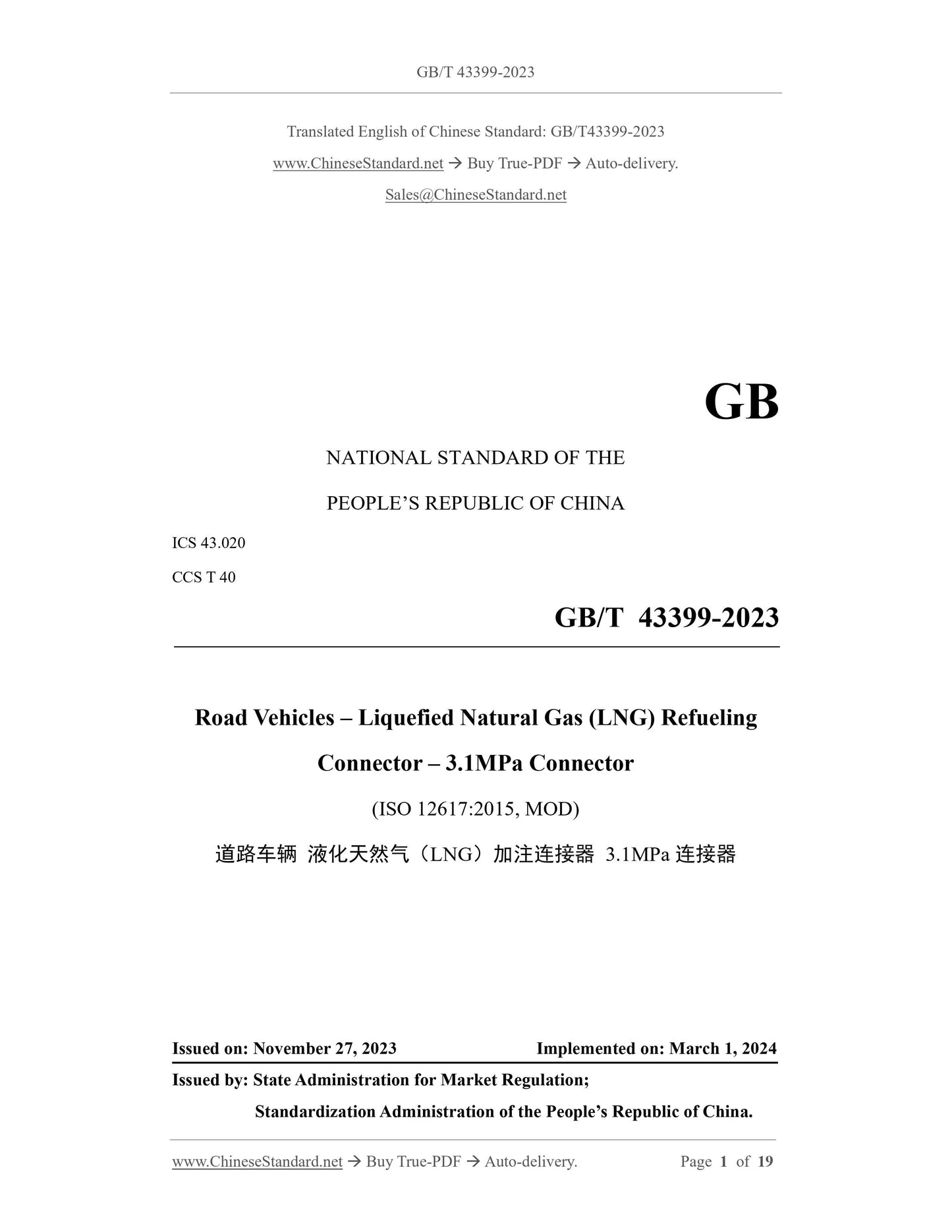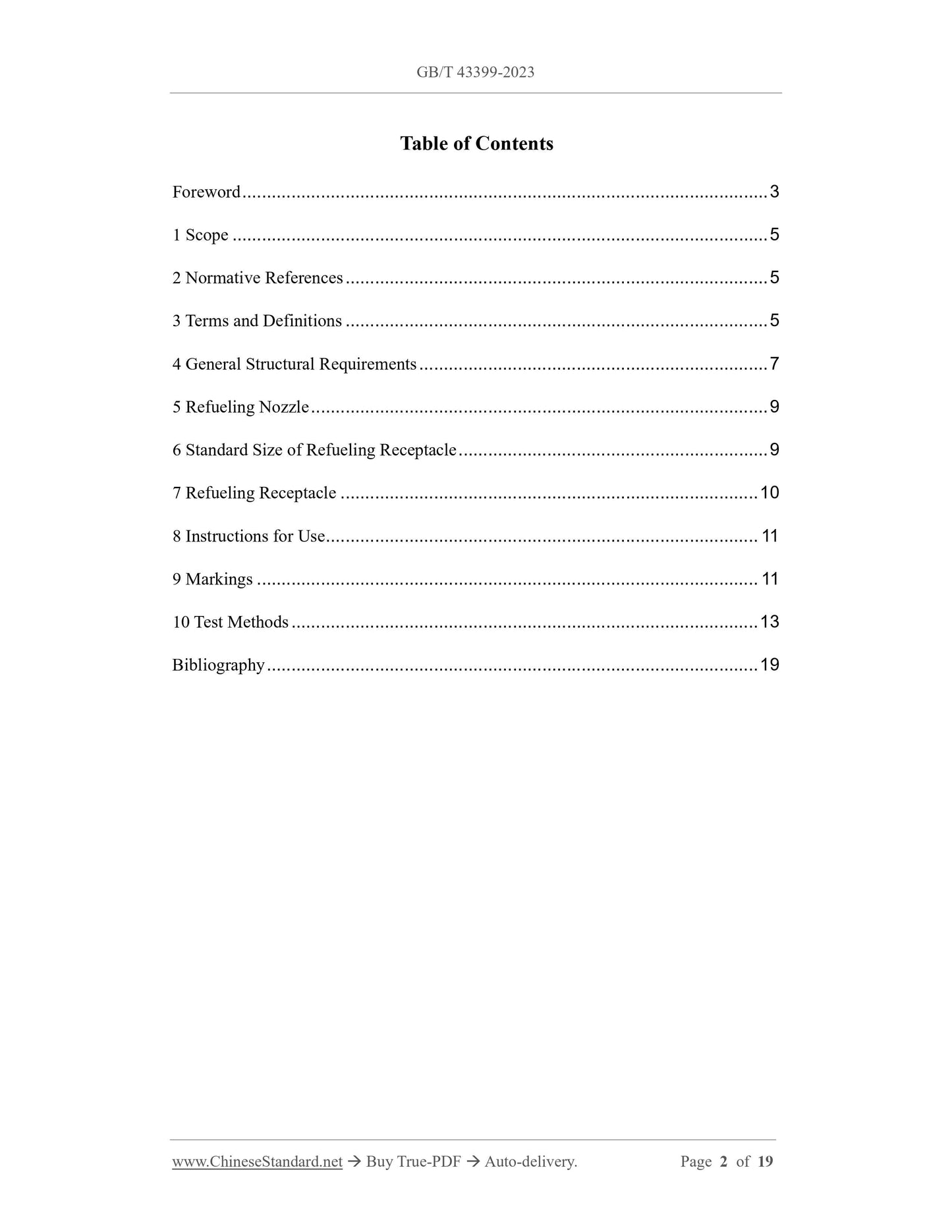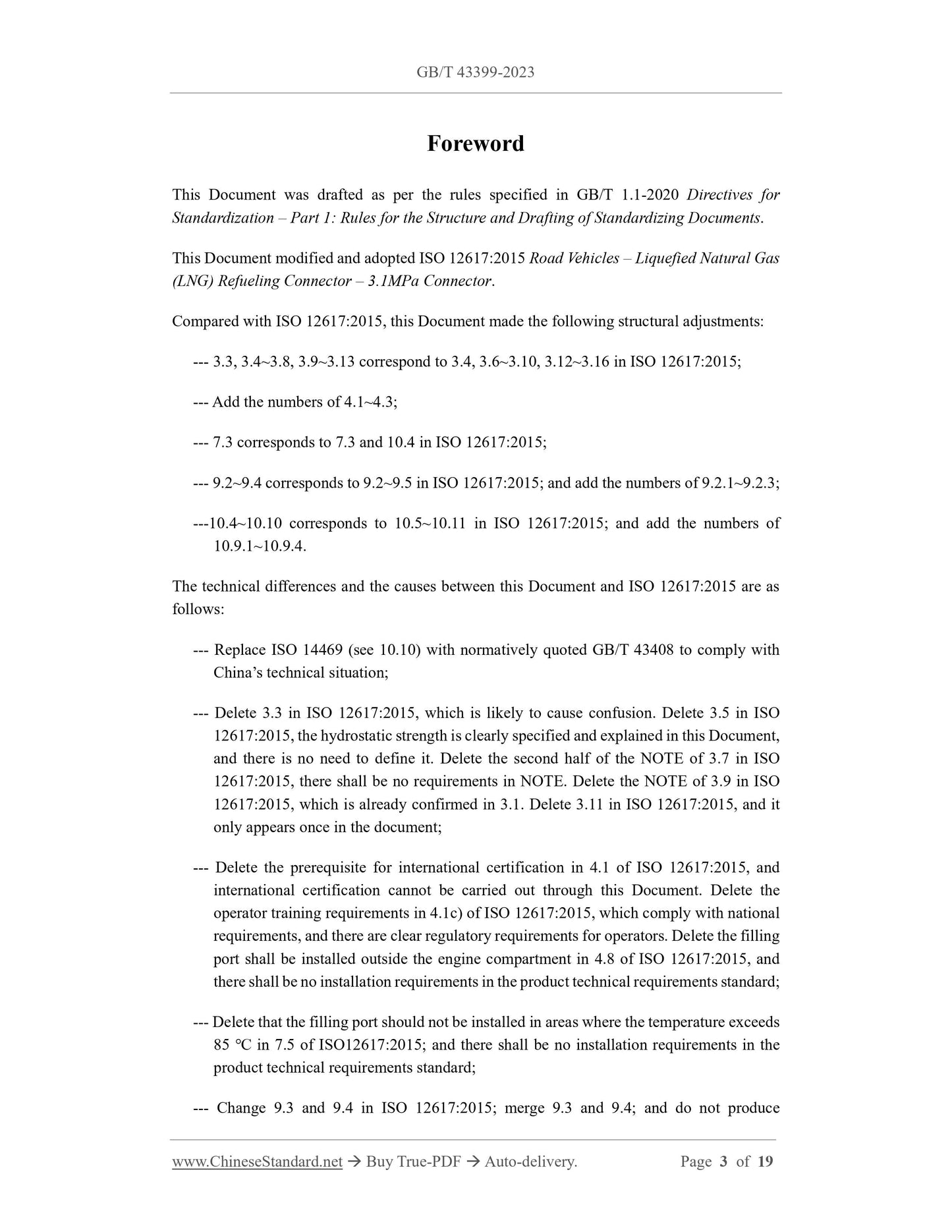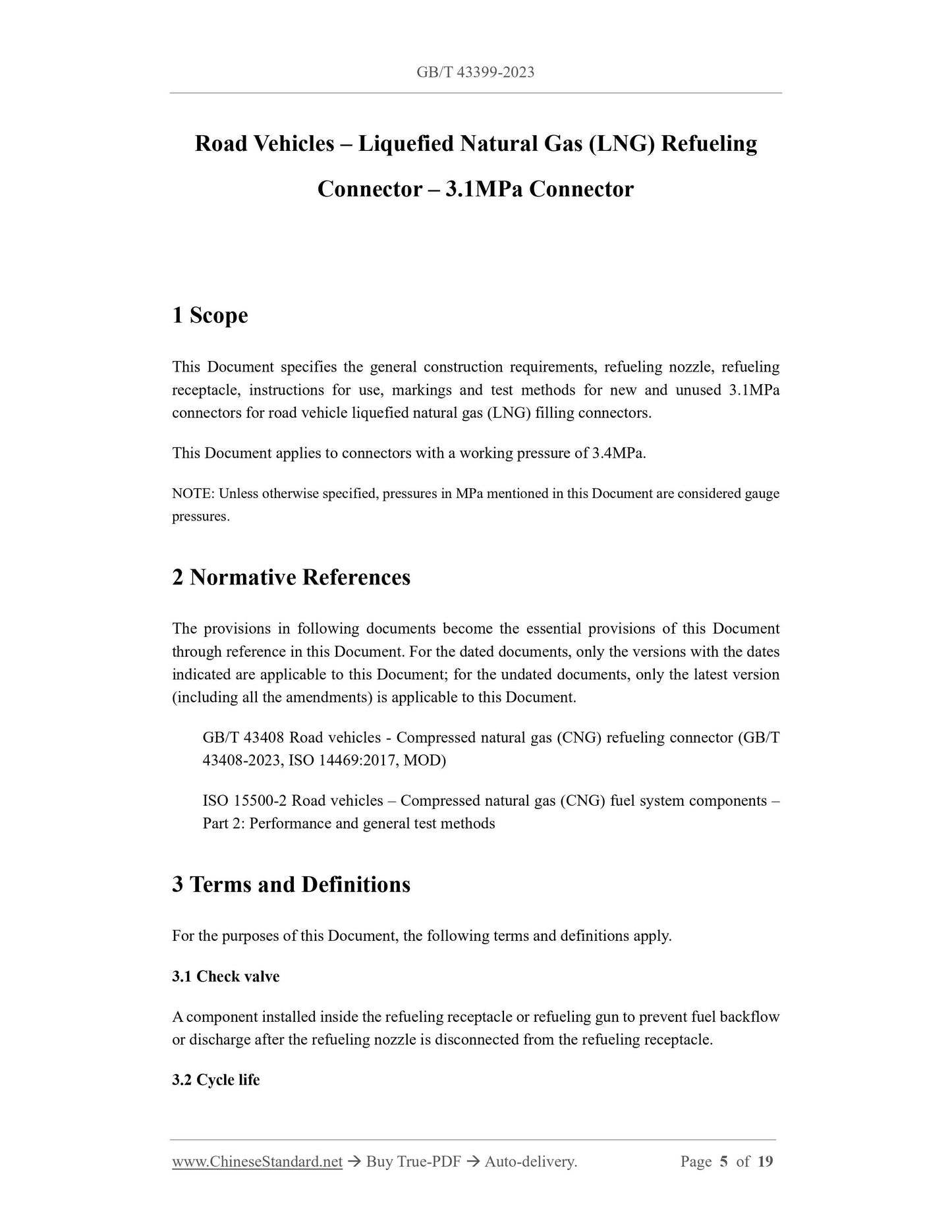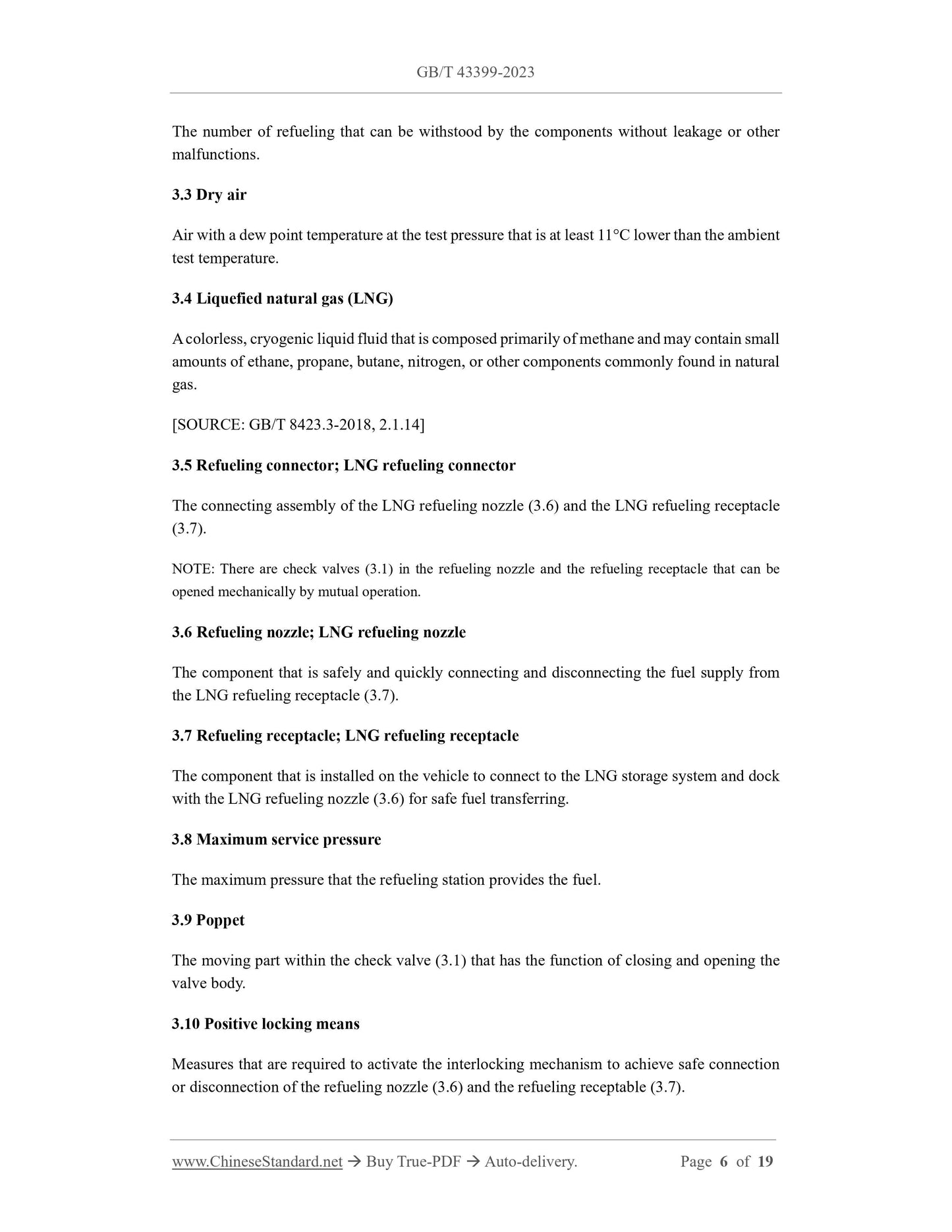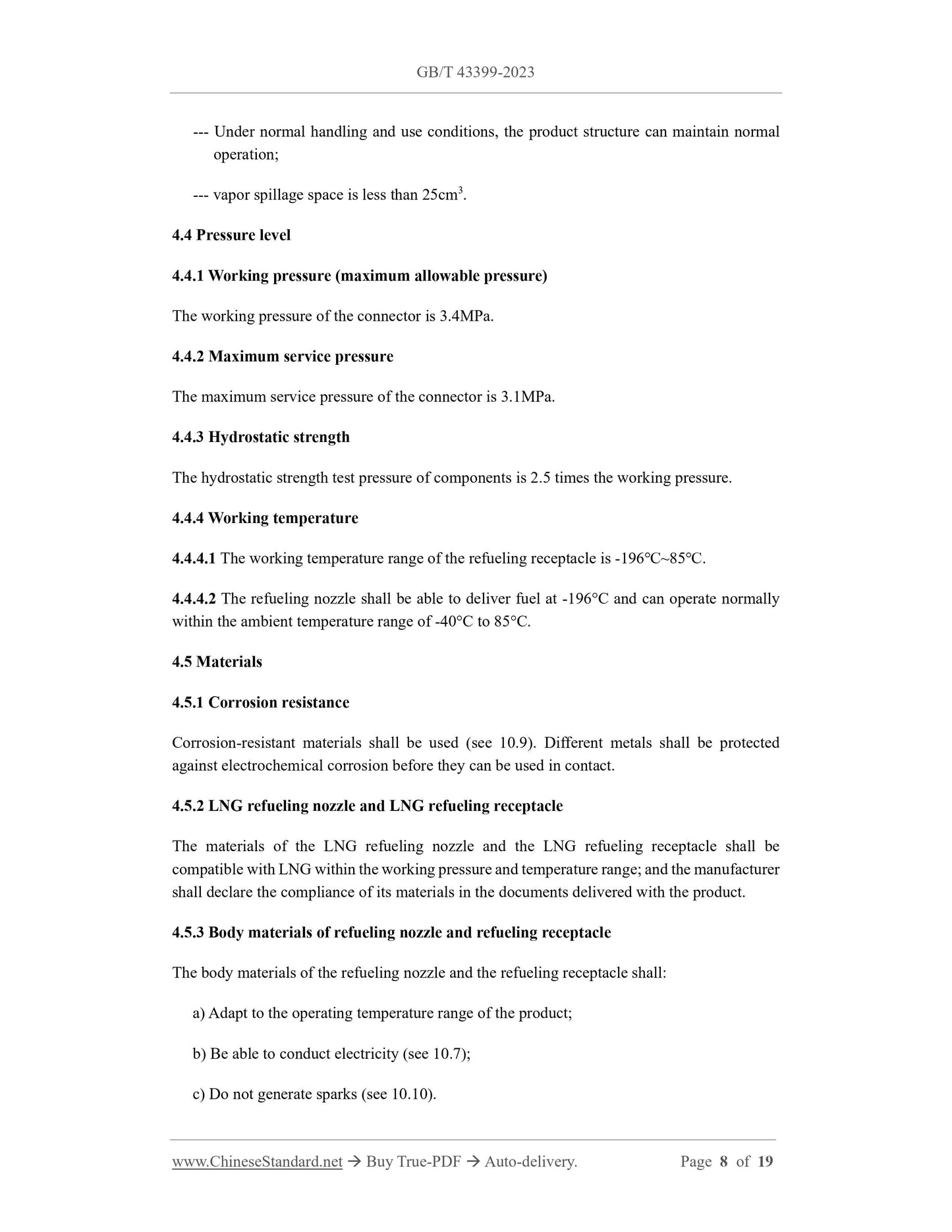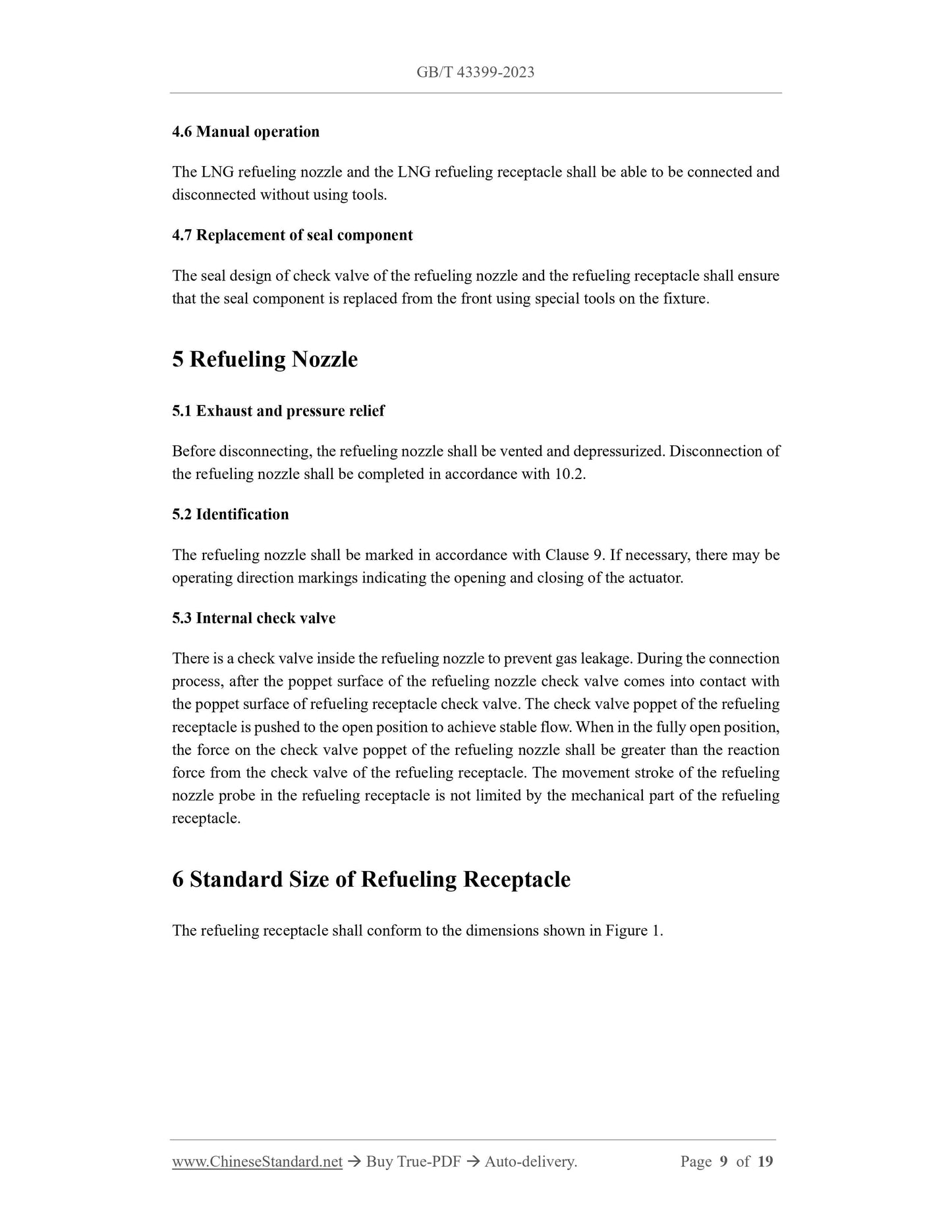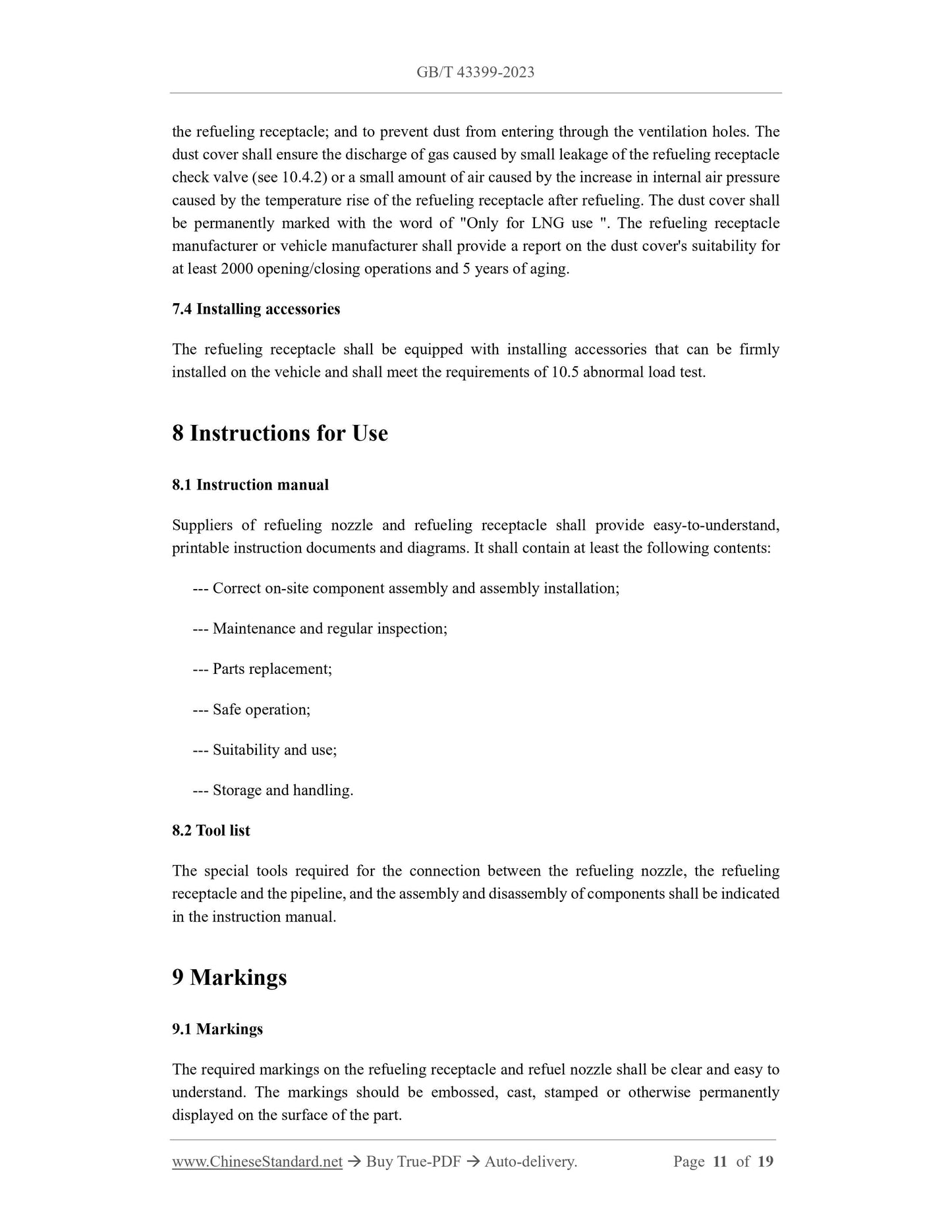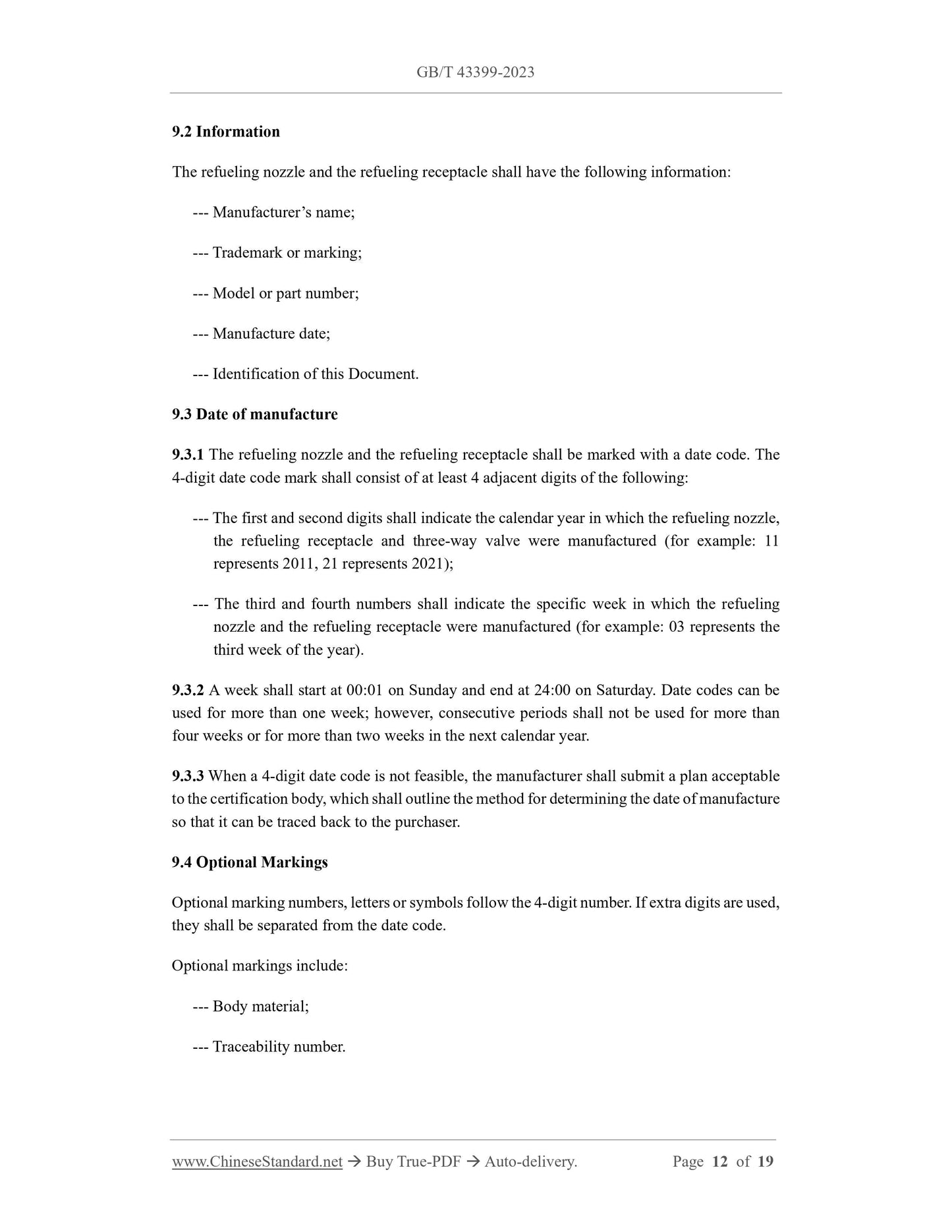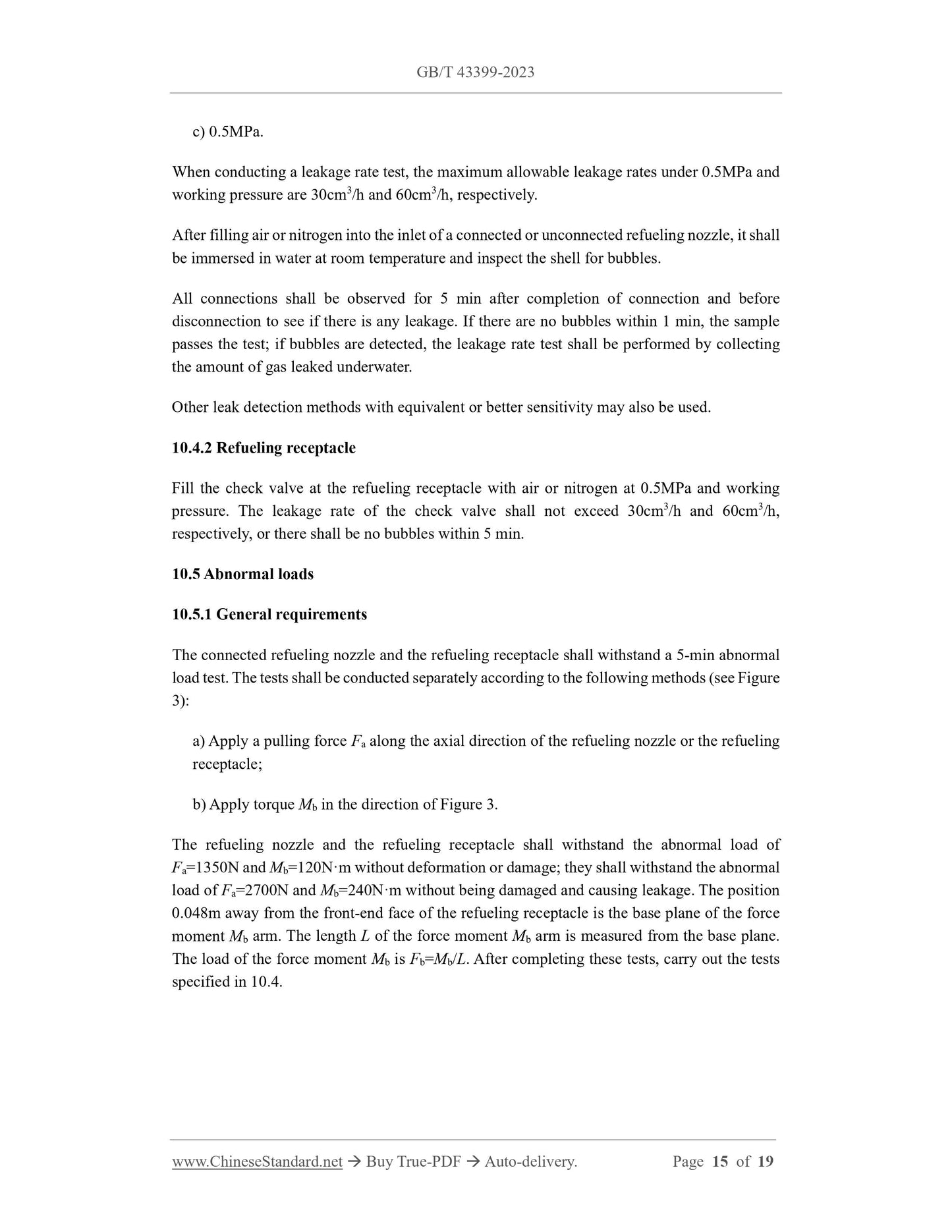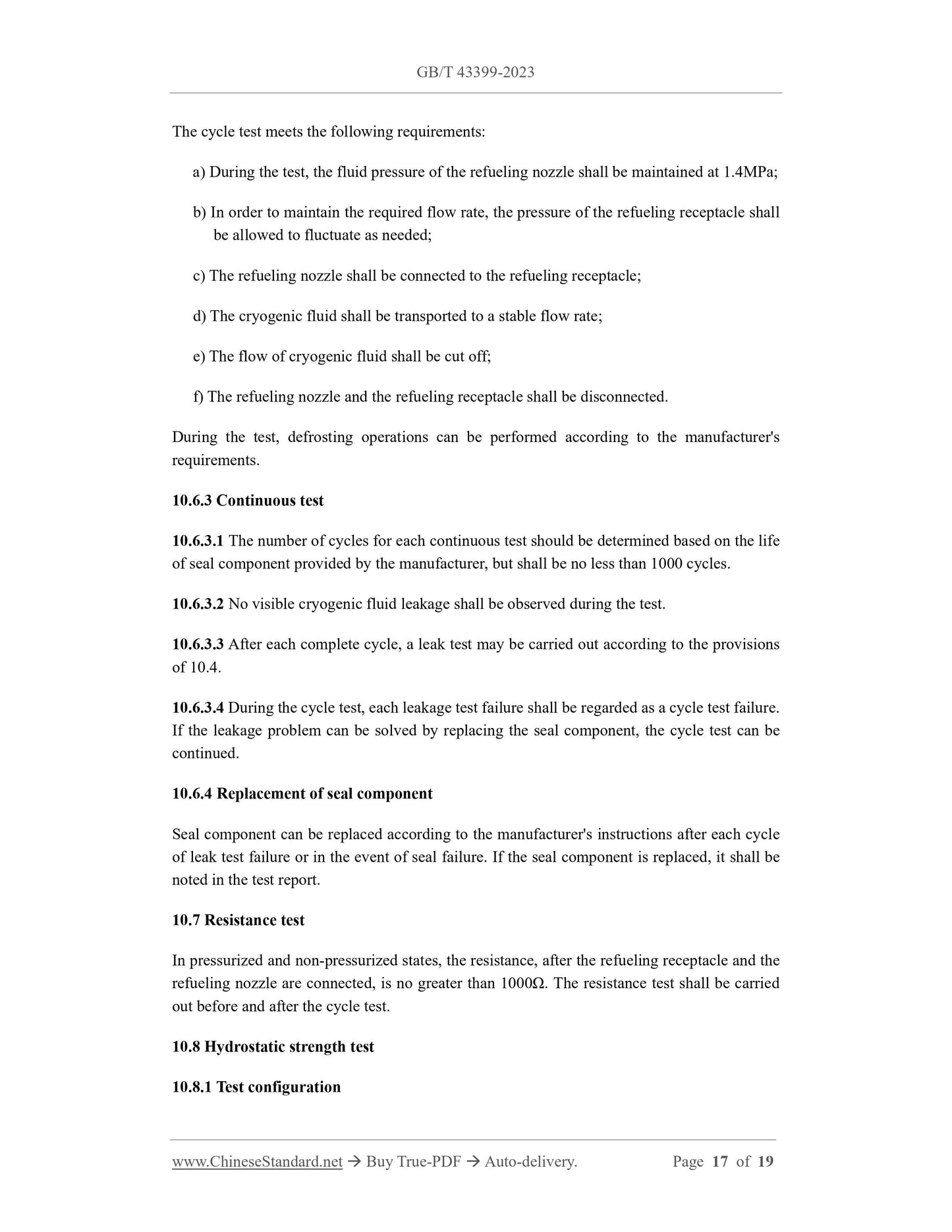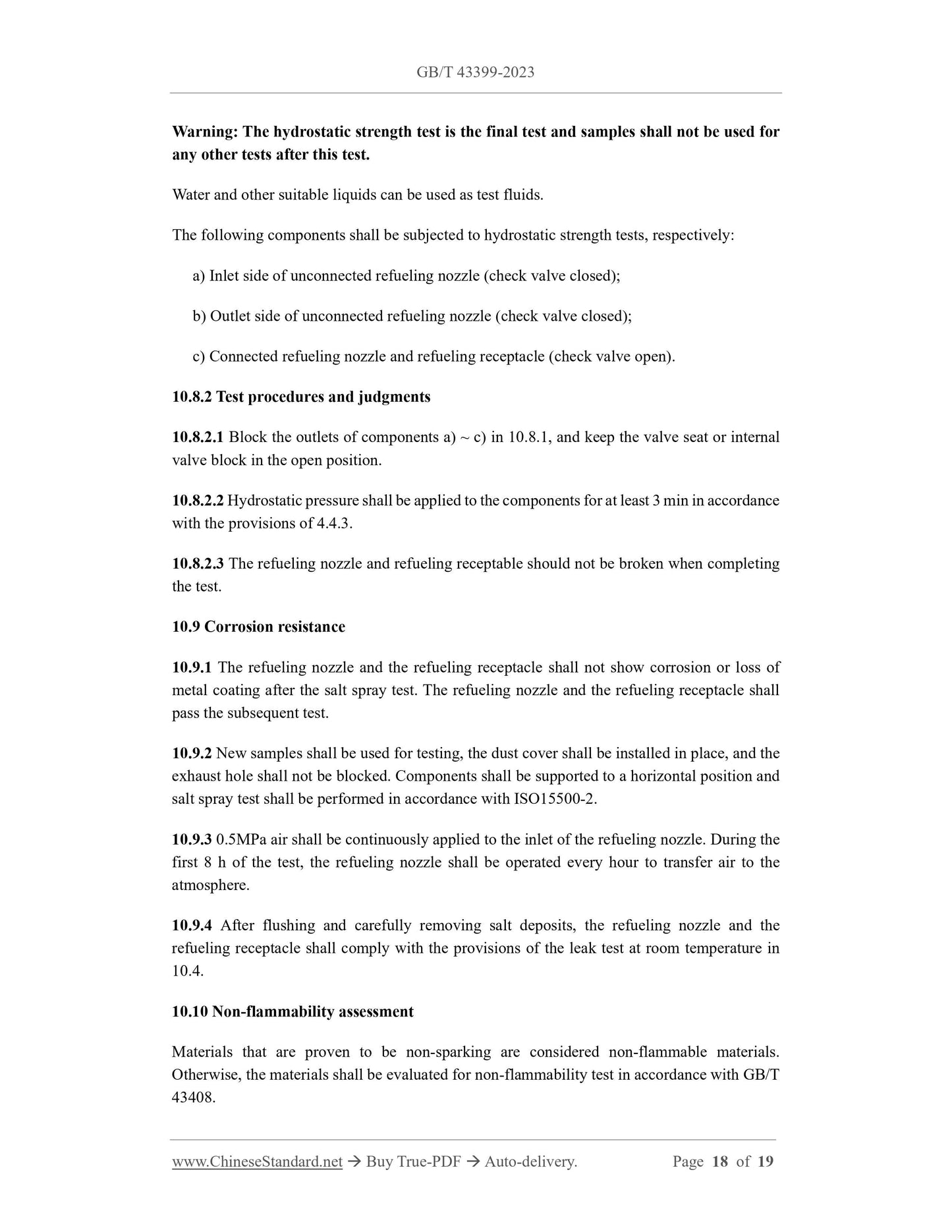1
/
of
12
www.ChineseStandard.us -- Field Test Asia Pte. Ltd.
GB/T 43399-2023 English PDF (GB/T43399-2023)
GB/T 43399-2023 English PDF (GB/T43399-2023)
Regular price
$275.00
Regular price
Sale price
$275.00
Unit price
/
per
Shipping calculated at checkout.
Couldn't load pickup availability
GB/T 43399-2023: Road vehicles - Liquefied natural gas (LNG) refuelling connector - 3.1MPa connector
Delivery: 9 seconds. Download (and Email) true-PDF + Invoice.Get Quotation: Click GB/T 43399-2023 (Self-service in 1-minute)
Newer / historical versions: GB/T 43399-2023
Preview True-PDF
Scope
This Document specifies the general construction requirements, refueling nozzle, refuelingreceptacle, instructions for use, markings and test methods for new and unused 3.1MPa
connectors for road vehicle liquefied natural gas (LNG) filling connectors.
This Document applies to connectors with a working pressure of 3.4MPa.
NOTE: Unless otherwise specified, pressures in MPa mentioned in this Document are considered gauge
pressures.
Basic Data
| Standard ID | GB/T 43399-2023 (GB/T43399-2023) |
| Description (Translated English) | Road vehicles - Liquefied natural gas (LNG) refuelling connector - 3.1MPa connector |
| Sector / Industry | National Standard (Recommended) |
| Classification of Chinese Standard | T40 |
| Classification of International Standard | 43.020 |
| Word Count Estimation | 15,188 |
| Date of Issue | 2023-11-27 |
| Date of Implementation | 2024-03-01 |
| Issuing agency(ies) | State Administration for Market Regulation, China National Standardization Administration |
Share
